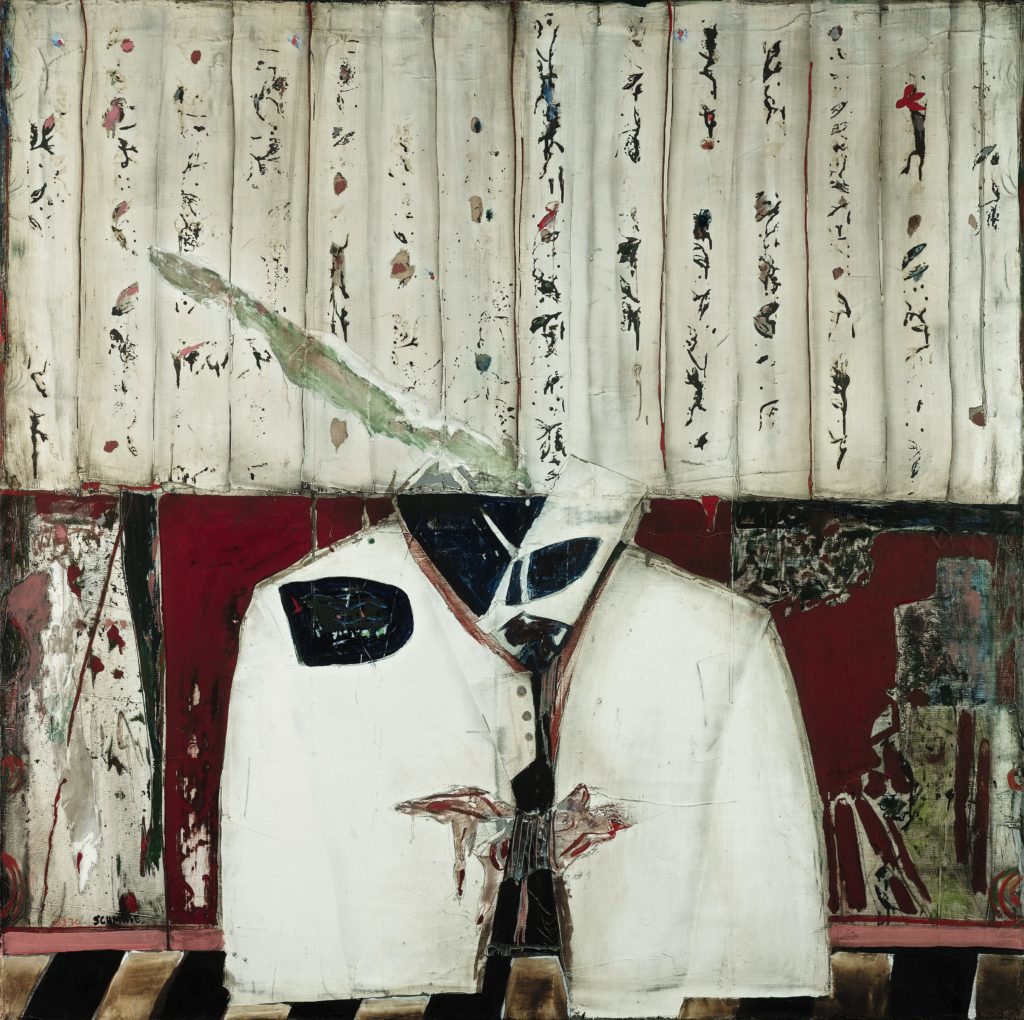The Rabbi

Jens Johannessen (f.1934) is often mentioned as one of the leading and most successful artists of his generation. From the very first time he exhibited at Galleri Haaken in Oslo in 1964 – where prominent institutions such as the National Gallery and The National Touring Exhibitions made acquisitions – his works have been favoured collectors’ items in many circles. It is also true that the gallery’s previous owner Haaken Christensen had made considerable efforts to promote Johannessen’s art and present it to Norwegian collectors and to the public.
Like many of his contemporaries from the early 60s, Johannessen was strongly influenced by French lyrical abstraction, and although his pictures had a seemingly expressionistic style, they were both decorative and elegant in character. He continued to develop and cultivate these elements in the so-called “cut-out pictures”, which he began to work on around 1970 and as The Rabbi is an early example of. The pictures gained this epithet because of the technique the artist used; by painting layer upon layer of various colours without allowing the paint to dry, and then cutting up some of the outer layers, he revealed the underlying colours. The “cut-out pictures” resemble such differing art forms as Surrealism, Russian icons and Norwegian folk art. Here it is also tempting to mention the Dutch Cobra artist Pierre Alechinsky’s works from the 60s and 70s, which – judging from appearances – must have been an important source of inspiration for Johannessen.
The “cut-out” paintings became extremely popular, although eventually some critics expressed scepticism about Johannessen’s markedly decorative and polished style, which they perceived as being “sales-oriented” and “superficial”. This most likely contributed to the fact that Johannessen discontinued working in this technique in the mid 70s. Since then, he has primarily concentrated on book illustrations and watercolours, although he eventually also took up oil painting again.
OWG